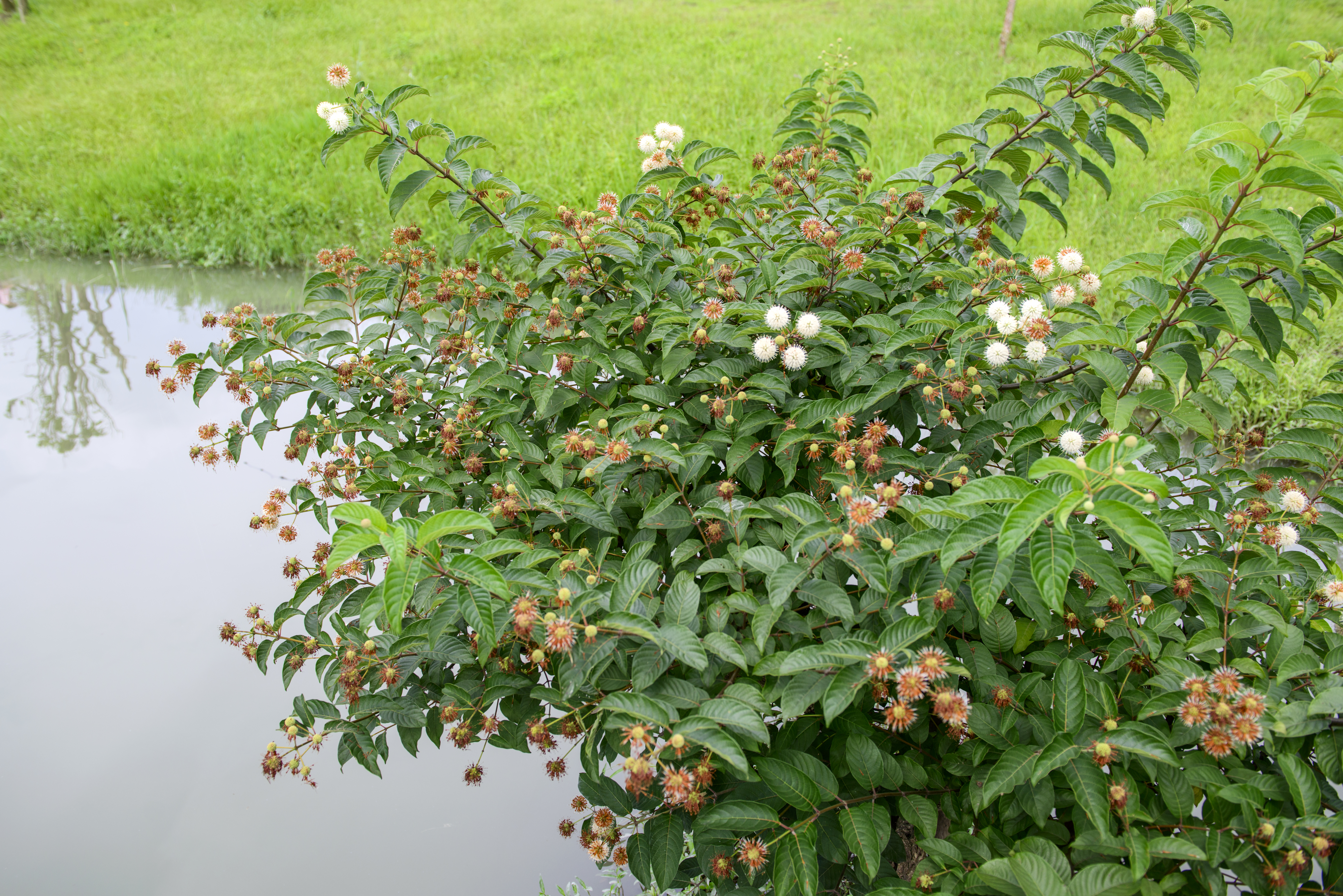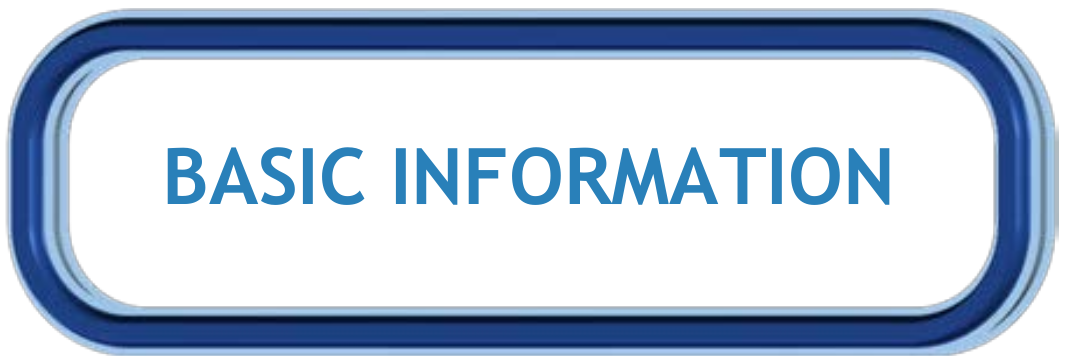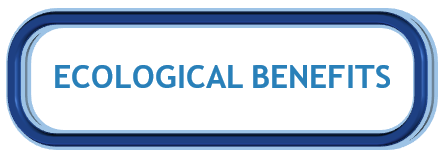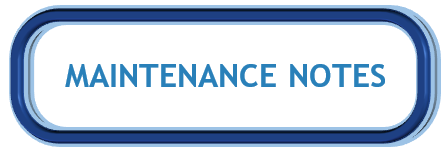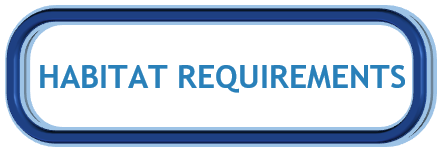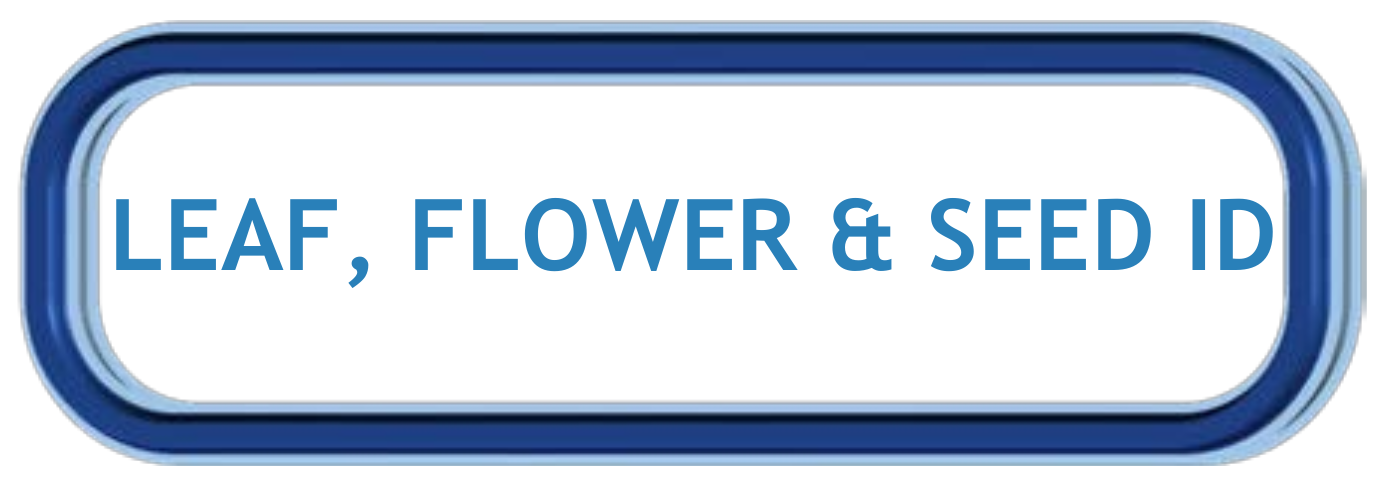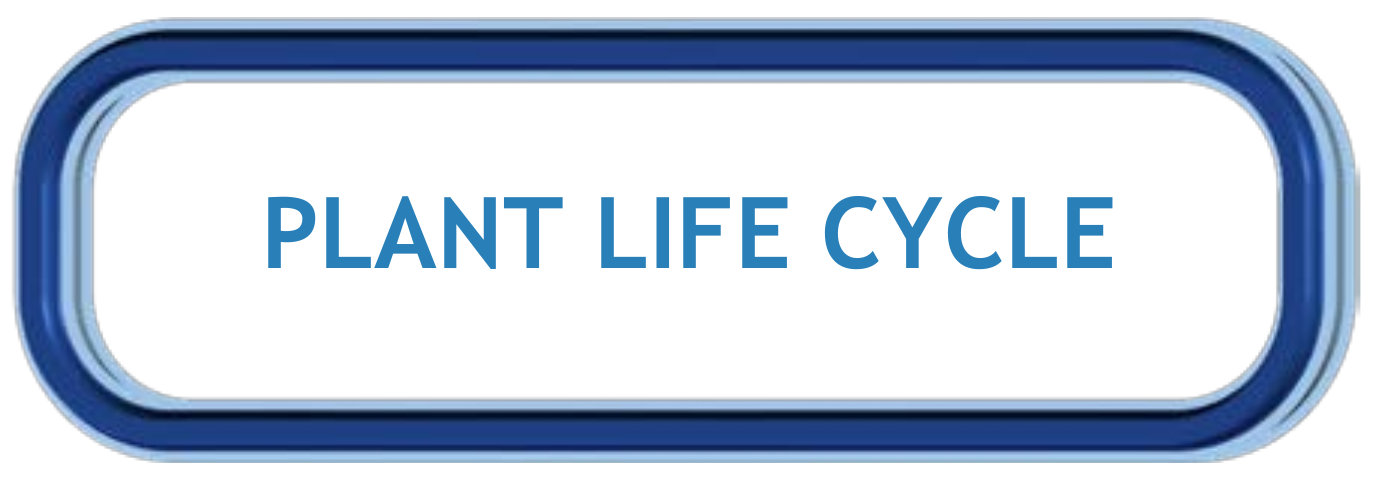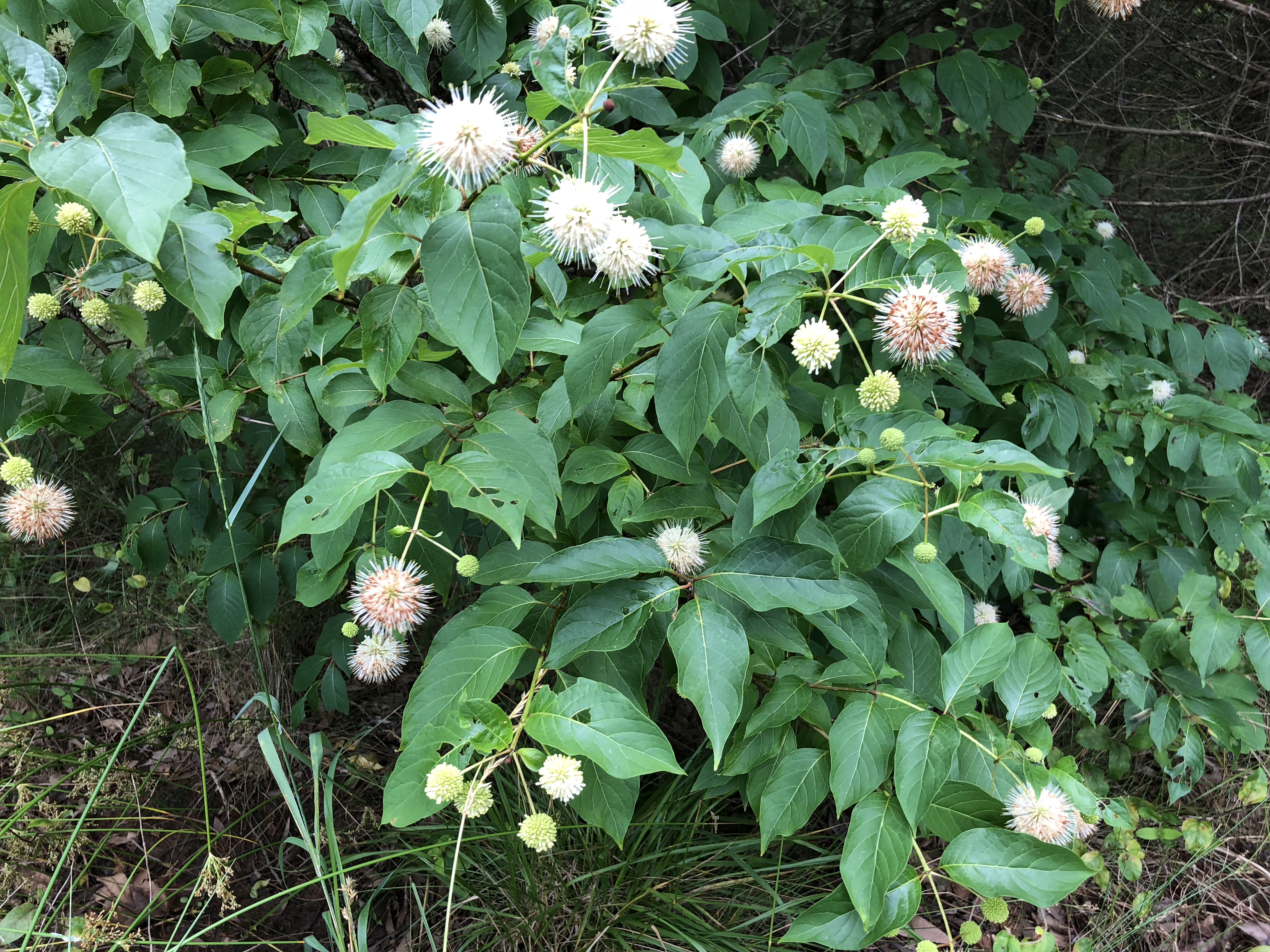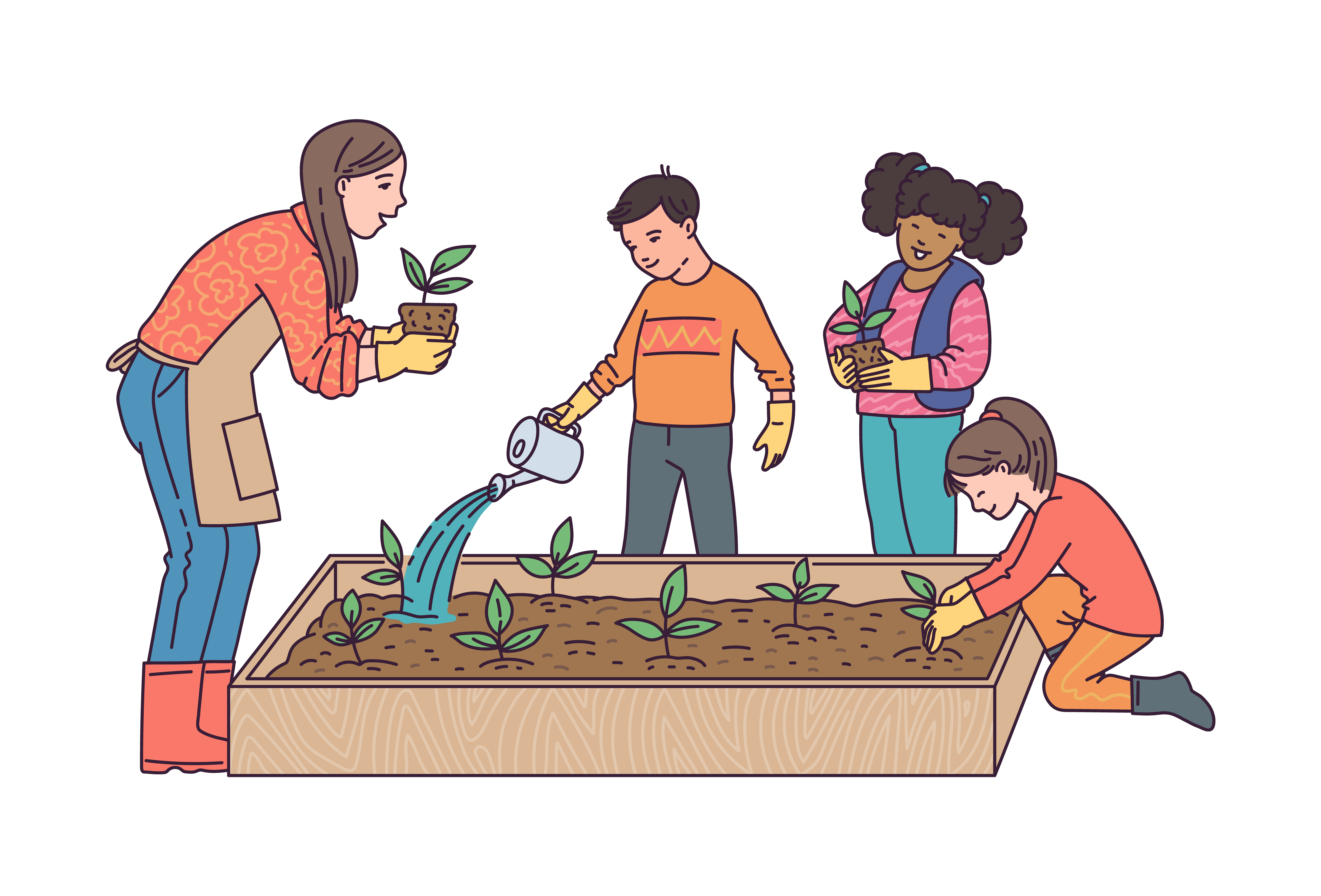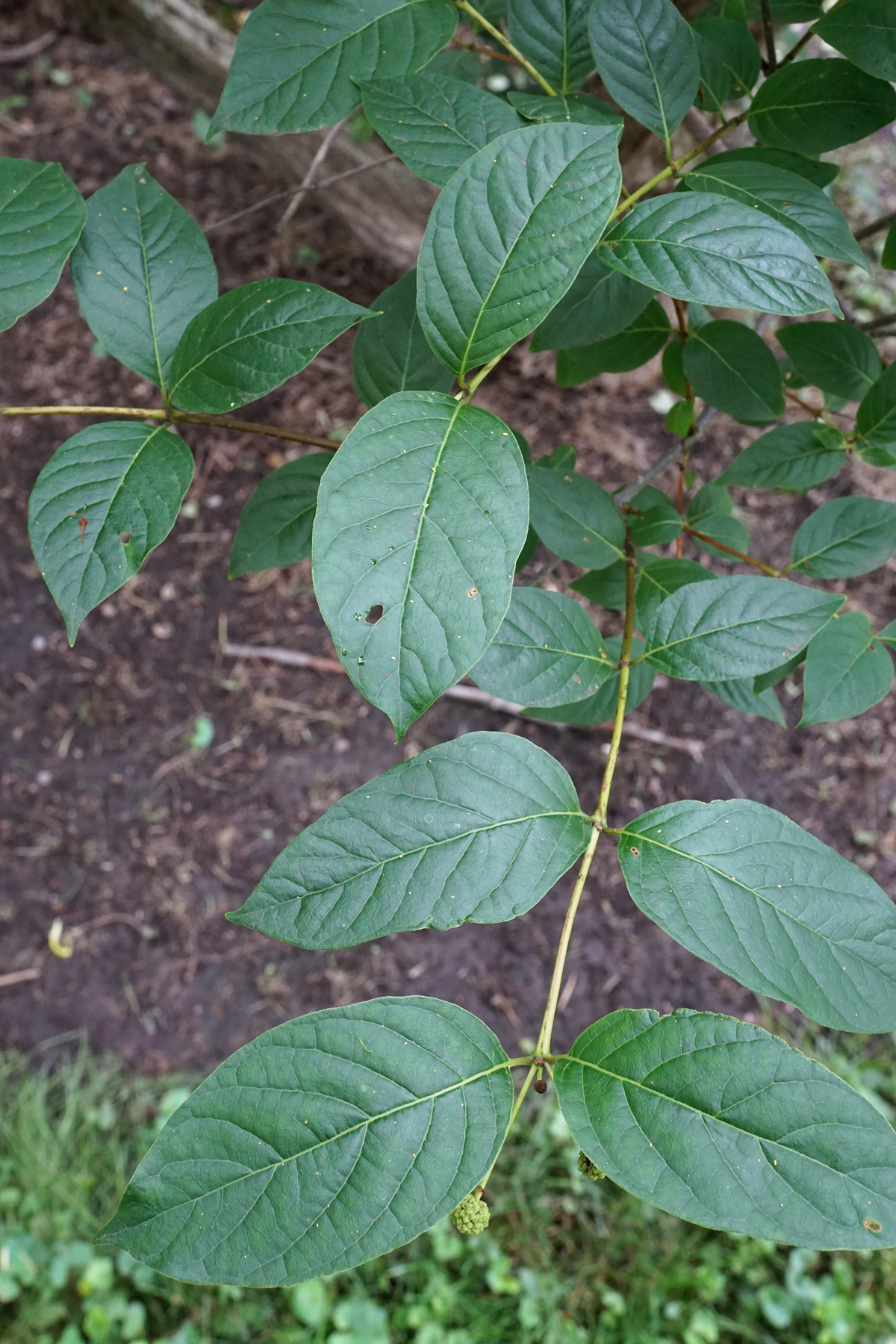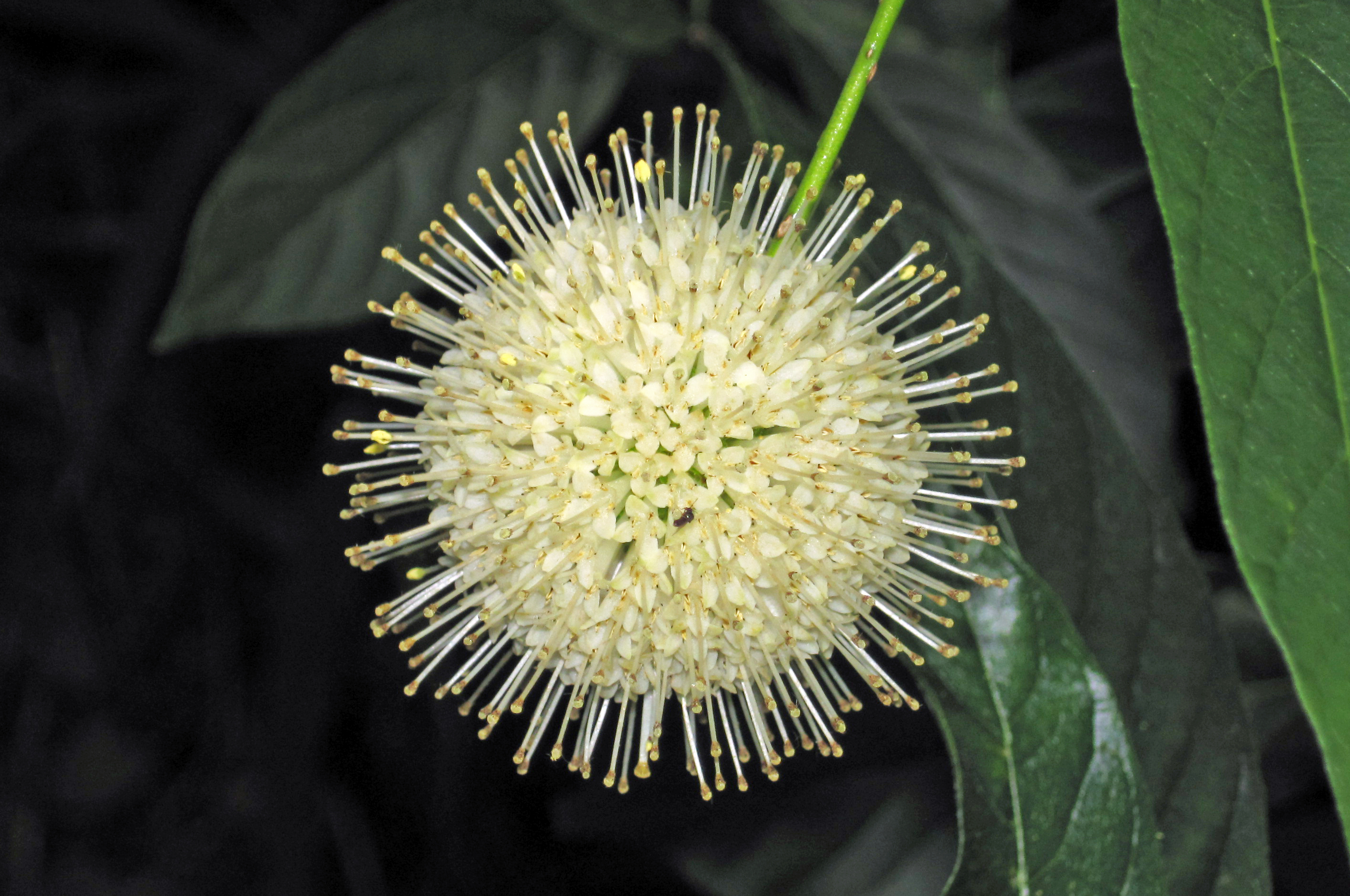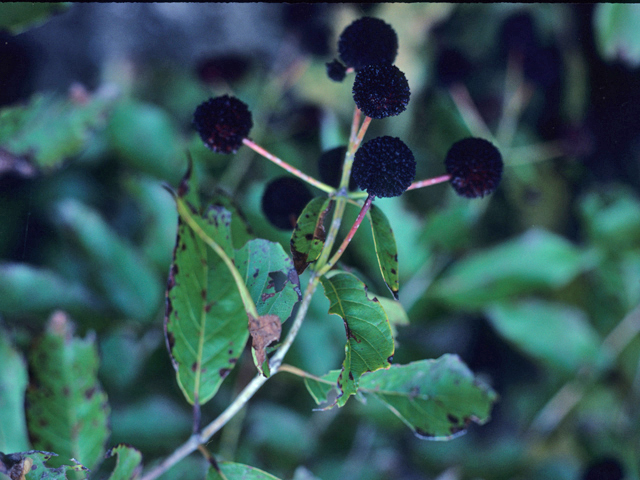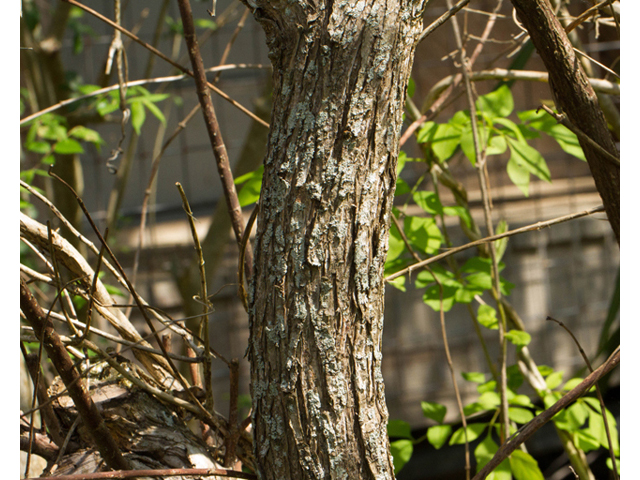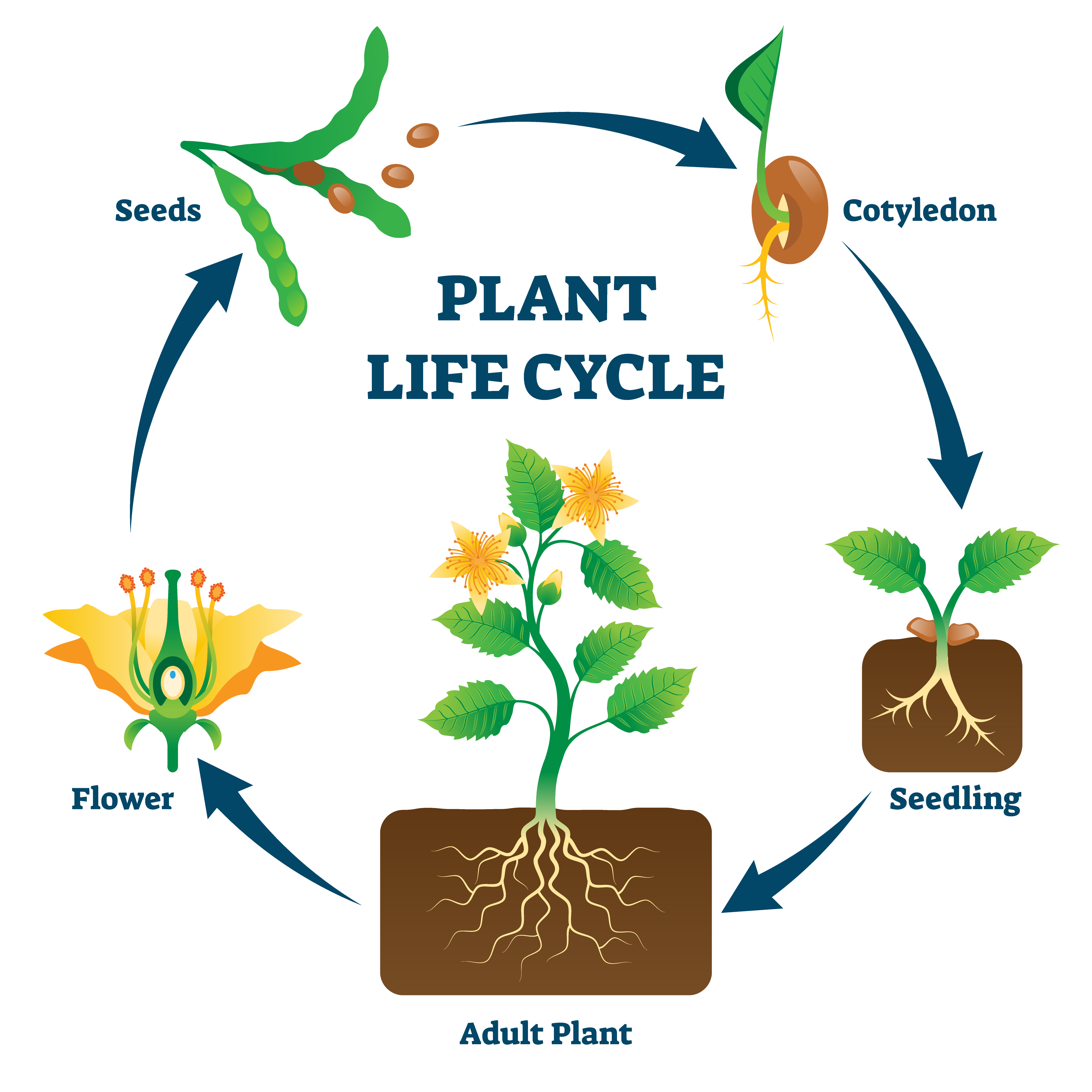Dig into Plants: Buttonbush
| Buttonbush Other Common Names: Common Buttonbush, Button Willow, Honey Bells, Honey Balls Scientific Name: Cephalanthus occidentalis Native to Alabama: Yes |
|
Buttonbush Dreamstime Click on image to enlarge it |
Learn more about...
| Ecological Benefits |
| This plant provides food for: | ||||
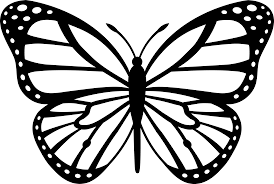 |
 |
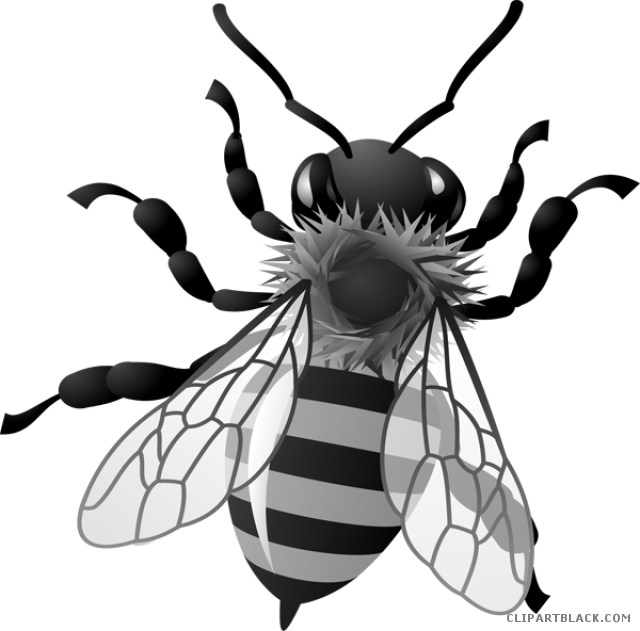 |
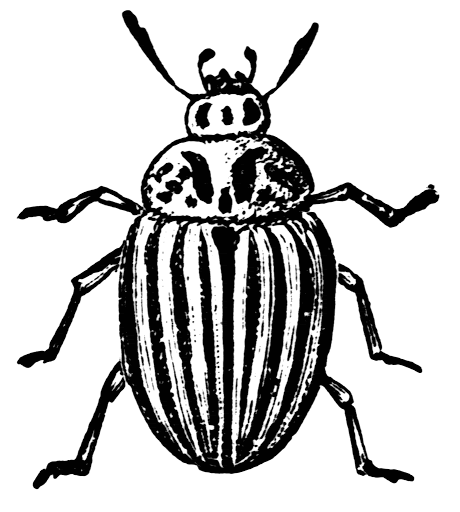 |
 |
| Butterflies | Hummingbirds | Native Bees | Other Pollinators | Other Birds |
| Other Ecological Benefit(s): | ||||
| Ducks, waterbirds, and shorebirds eat the seeds | ||||
| Habitat Requirements | |||
| This plant prefers: | |||
|
(6+ hours of sun per day) (2-6 hours of sun per day) |
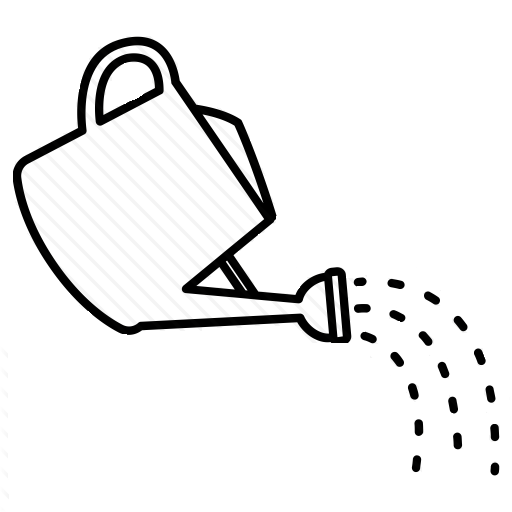
Moist to wet soils at all times
|
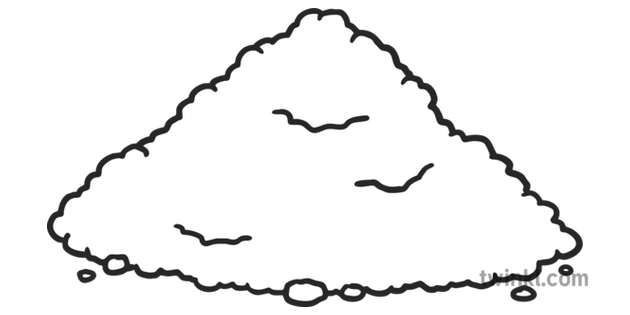 Sandy, Loamy, Clay, Limestone, Sandy, Loamy, Clay, Limestone,or Moist Soil |
|
| Leaf, Flower & Seed Identification | ||||
| LEAF DESCRIPTION |
Buttonbush Leaves
Wikimedia - Plant Image Library from Boston Click on image to enlarge it |
|||
| Leaf Characteristics Chart (PDF) | ||||
| Shape: Ovate |
Margin: Entire/Smooth |
Arrangement: Opposite |
Form: Simple |
|
|
|
|
|
|
|
| Description: | ||||
| Leaves are 2-6 inches long and 1-3 inches wide; long and narrow with a pointed tip and a rounded base; top surface is glossy while underside of the leaf is more dull; leaves are paired or in groups of 3 | ||||
| FLOWER DESCRIPTION |
Buttonbush Flower
James L. Reveal Click on image to enlarge it |
|||
| Flower Shape Chart (JPG) | ||||
| Color: White, tan, pink |
Shape:
Funnelform |
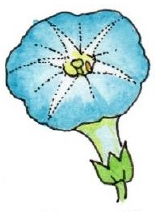 |
Bloom Months: Jun - Sep |
|
| Description: | ||||
| Flowers have 4-5 petals each and are small and occur in round, white ball-like clusters that are around 1 inch in diameter; Flowers resemble a pincushion due to the pistils of the flower sticking out beyond the rest of the flower; fragrant with a sweet odor | ||||
| SEED DESCRIPTION |
|
||
| Type: Fruit - Nut |
Description:
Reddish brown pyramid-shaped nutlets that occur in pairs of two; Occur in rounded masses that persist through the winter
|
Months in Seed: Fall - Winter |
|
| Plant spreads by: | |||
| Seeds | |||
| BARK DESCRIPTION |
Buttonbush Bark
Lady Bird Johnson Wildflower Center - James Garland Holmes Click on image to enlarge it |
|
| Color: | Texture: | |
| Brownish gray | Peeling | |
| Description: | ||
| Gray with a peeling texture | ||
ADDITIONAL RESOURCES FOR TEACHERS
| Quick Fact Sheet (Condensed Species Info) |
Plant ID Sign: Ready as-is PDF |
Plant ID Sign: Editable Word Doc |
QR Code (Links to this Webpage) |
INFORMATION SOURCES FOR THIS PLANT
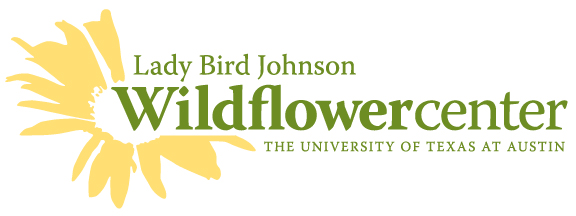 |
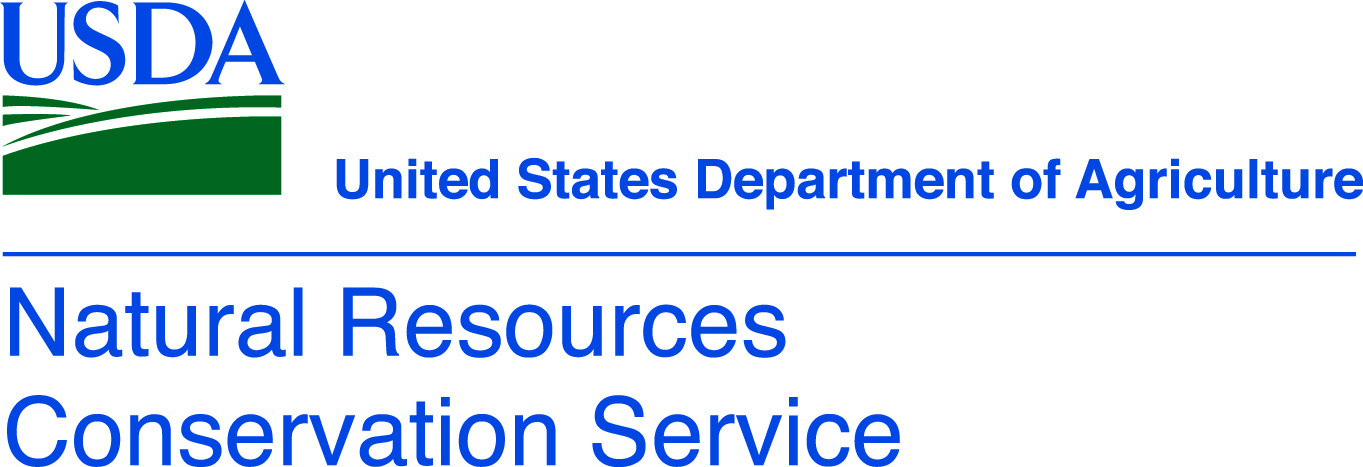 |
|
|
|
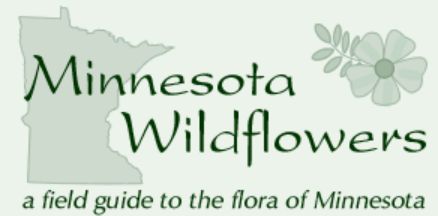 |
|
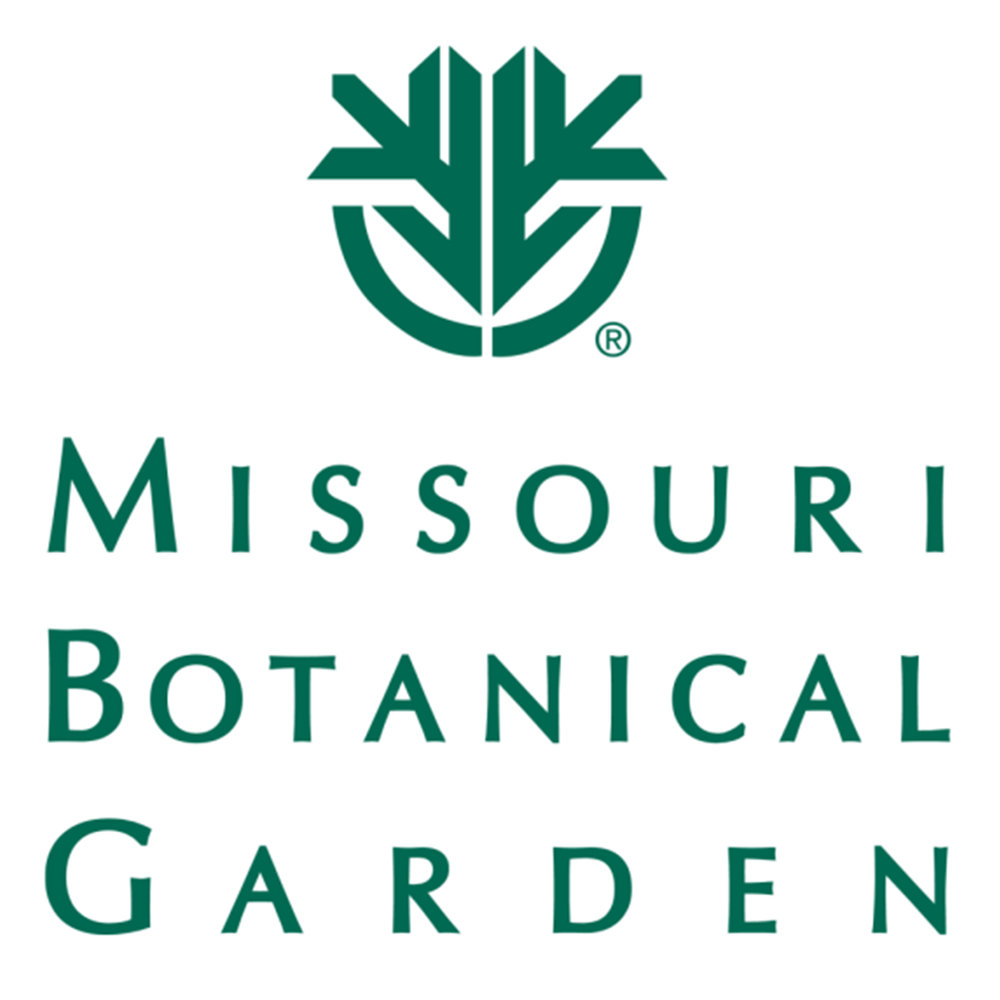 |
|
 Wildlife Tag
Wildlife Tag
